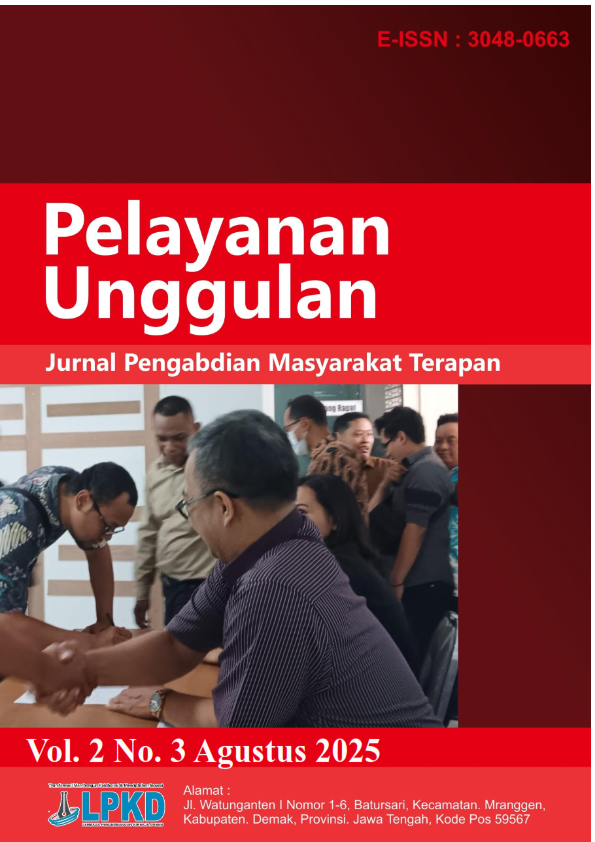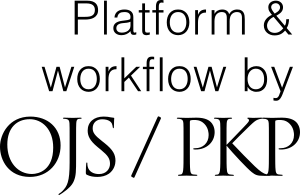Optimalisasi Kesehatan Ibu dan Anak di Era Teknologi
DOI:
https://doi.org/10.62951/unggulan.v2i3.2139Keywords:
Digital era, E-Health, Maternal and child health, Social media, Stunting preventionAbstract
In today’s fast-paced digital era, health information is no longer obtained solely through direct visits to health facilities but can also be accessed through information technology such as E-Health platforms and social media. Through these digital tools, mothers not only gain basic knowledge about child health but also acquire essential information, such as how to prevent stunting, maintain optimal nutrition during the first 1,000 days of a child’s life, and improve maternal health. Easily accessible information has become an important resource for parents, especially mothers, in supporting the maximum growth and development of their children from an early age. This community service activity, entitled Optimizing Maternal and Child Health in the Technological Era, aimed to improve participants’ knowledge while also shaping positive attitudes toward the use of information technology and social media. Through this program, participants were encouraged to be more skillful and selective in accessing accurate health information, thus supporting efforts to maintain maternal and child health both within the family and in the school environment. The activity was carried out at TK IT Al-Andalusia, Gowa Regency, involving parents, teachers, and the school community. The results showed that the program was implemented successfully and smoothly, receiving very positive responses from participants. They were highly enthusiastic throughout the sessions, from lectures to interactive discussions. Furthermore, participants expressed their hope that similar activities could be conducted regularly and on an ongoing basis. In this way, the benefits achieved can be sustained, leading to improved health outcomes and the development of healthier lifestyles in schools and the wider community.
References
Andika, F., Afriza, N., Husna, A., Rahmi, N., & Safitri, F. (2022). Edukasi tentang isu permasalahan kesehatan di Indonesia bersama calon tenaga kesehatan masyarakat Provinsi Aceh. Jurnal Pengabdian Kepada Masyarakat Bidang Kesehatan, 4(1), 39–44.
Budiman, Y. U., Santoso, M. F., Pattiasina, T., & Wahidin, A. J. (2022). Aplikasi TikTok sebagai media promosi kelompok masyarakat peduli iklim Bumiku Satu. J-ABDI: Jurnal Pengabdian Kepada Masyarakat, 2(5), 5085–5092. https://doi.org/10.53625/jabdi.v2i5.3677
Hernawati, & Wahyuni, N. (2020). Refleksi dan pendampingan orang tua dalam pengasuhan anak di era digital. Jurnal Abdimas Indonesia, 8(1), 89–98. https://ejournal.stiepancasetia.ac.id/index.php/jurnalabdimas/article/view/23
Mustofa, R. A. B., & Sani, M. (2024). Efektivitas promosi kesehatan melalui media sosial dalam mendorong perilaku hidup sehat pada remaja. Sosial Simbiosis: Jurnal Integrasi Ilmu Sosial dan Politik, 1(3), 212–223. https://doi.org/10.62383/sosial.v1i3.484
Noy, S., et al. (2020). Big data and public health decision-making: A comprehensive review. Public Health Analytics Quarterly, 22(1), 45–59.
Pratiwi, D. (2021). Peran ibu dalam pengasuhan anak di era digital. Jurnal Pengabdian Masyarakat, 5(1), 30–35.
Rahman, A., & Yuliana, R. (2023). Pemanfaatan E-Health dalam peningkatan kesehatan ibu dan anak di pedesaan. Jurnal Kesehatan Masyarakat Digital, 4(2), 112–120. https://doi.org/10.21009/jkmd.042.05
Sari, M., & Putri, N. A. (2022). Media sosial sebagai sarana edukasi kesehatan reproduksi remaja. Jurnal Komunikasi Kesehatan, 3(1), 55–64. https://doi.org/10.21093/simas.v1i3.9913
World Health Organization. (2021). Improving maternal and child health through digital health. WHO Press. https://www.who.int/publications/i/item/9789240034592
UNICEF. (2022). Nutrition in the first 1,000 days: Building a healthy foundation for children. UNICEF. https://www.unicef.org/nutrition/1000-days
Kementerian Kesehatan RI. (2023). Strategi percepatan pencegahan stunting 2023–2024. Kementerian Kesehatan RI.
Fauziah, I., & Hartati, S. (2021). Pengaruh edukasi gizi melalui media digital terhadap peningkatan pengetahuan ibu balita. Jurnal Gizi dan Pangan Indonesia, 15(2), 78–86.
Mahmudah, L., & Yuniarti, T. (2023). Optimalisasi peran kader posyandu melalui E-Health dalam pencegahan stunting. Jurnal Pengabdian Kesehatan, 6(1), 15–24. https://doi.org/10.24036/abdi.v6i1.556
Anderson, J., & Black, R. E. (2020). Maternal and child nutrition in low- and middle-income countries. Annual Review of Public Health, 41(1), 321–345. https://doi.org/10.1146/annurev-publhealth-040119-094214
Kurniawan, D., & Setiawati, H. (2024). Pemanfaatan aplikasi kesehatan digital untuk meningkatkan perilaku hidup bersih dan sehat keluarga. Jurnal Inovasi Kesehatan Masyarakat, 8(1), 67–75.
Downloads
Published
How to Cite
Issue
Section
License
Copyright (c) 2025 Pelayanan Unggulan : Jurnal Pengabdian Masyarakat Terapan

This work is licensed under a Creative Commons Attribution-ShareAlike 4.0 International License.




